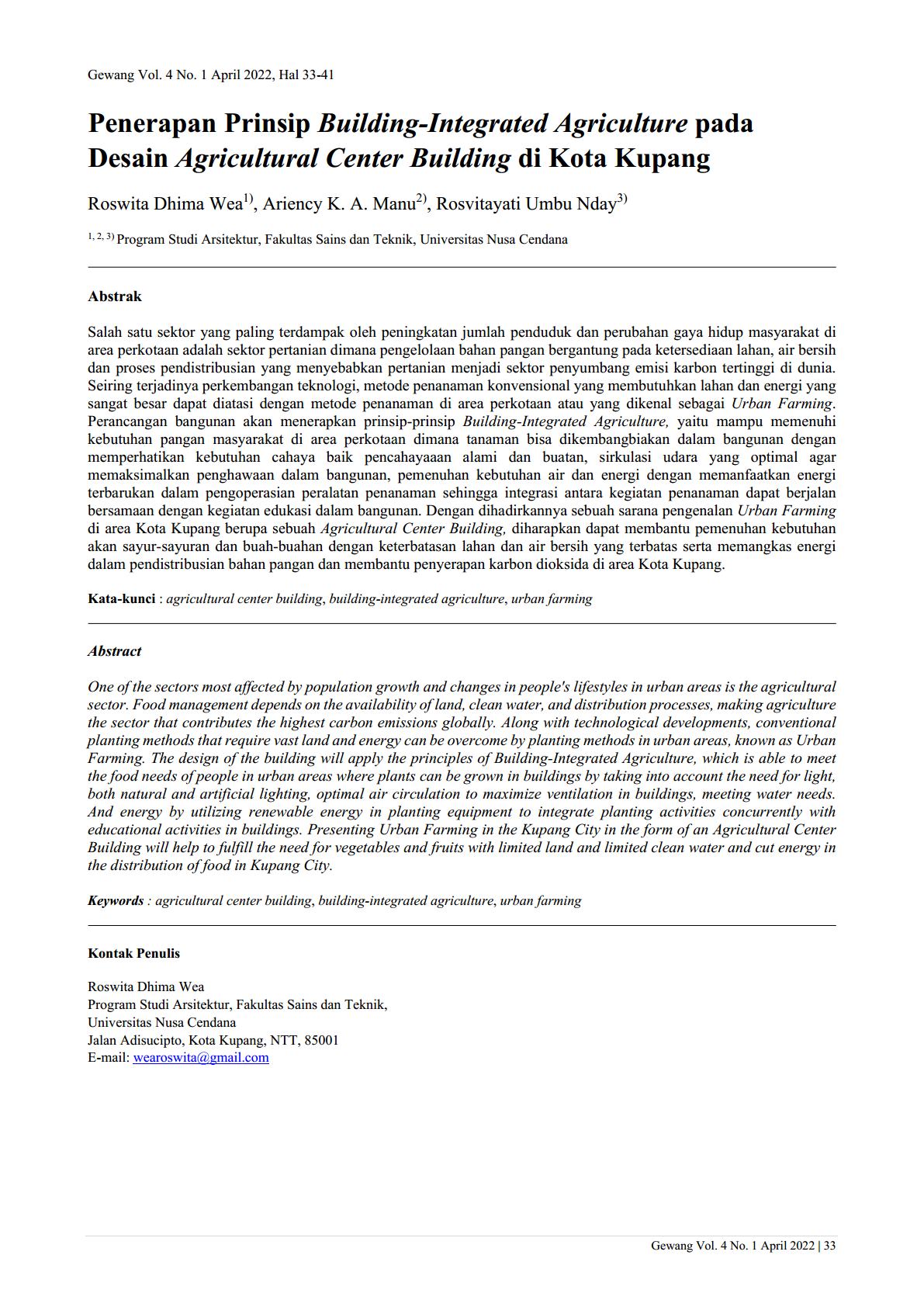Penerapan Prinsip Building-Integrated Agriculture pada Desain Agricultural Center Building di Kota Kupang
Main Article Content
Abstract
One of the sectors most affected by population growth and changes in people's lifestyles in urban areas is the agricultural sector. Food management depends on the availability of land, clean water, and distribution processes, making agriculture the sector that contributes the highest carbon emissions globally. Along with technological developments, conventional planting methods that require vast land and energy can be overcome by planting methods in urban areas, known as Urban Farming. The design of the building will apply the principles of Building-Integrated Agriculture, which is able to meet the food needs of people in urban areas where plants can be grown in buildings by taking into account the need for light, both natural and artificial lighting, optimal air circulation to maximize ventilation in buildings, meeting water needs. And energy by utilizing renewable energy in planting equipment to integrate planting activities concurrently with educational activities in buildings. Presenting Urban Farming in the Kupang City in the form of an Agricultural Center Building will help to fulfill the need for vegetables and fruits with limited land and limited clean water and cut energy in the distribution of food in Kupang City.
Downloads
Article Details
This license enables reusers to distribute, remix, adapt, and build upon the material in any medium or format, so long as attribution is given to the creator. The license allows for commercial use

